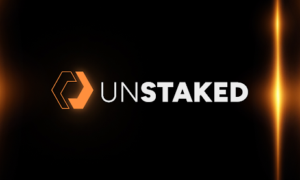Fireplaces and chimneys are classic features of many homes, adding warmth, ambiance, and charm. However, regular cleaning and maintenance are essential to ensure their safe and efficient operation. We’ll delve into the importance of fireplace and chimney cleaning, exploring the benefits, techniques, and frequency required for proper upkeep.
Unlocking the Secrets of Fireplace and Chimney Maintenance: Benefits, Techniques, and Maintenance Schedule
1. Why Clean Your Fireplace and Chimney Regularly
Regular cleaning of your fireplace and chimney is crucial for several reasons. Firstly, it ensures the safe operation of your fireplace. Over time, soot, creosote, and debris can accumulate in the chimney, increasing the risk of fires. Cleaning removes these hazards, reducing the likelihood of a dangerous incident.
Secondly, cleaning enhances the efficiency of your fireplace. A clean chimney allows for proper airflow, which optimizes combustion and heat output. This efficiency improves the warmth generated and reduces energy consumption and utility costs.
Thirdly, regular cleaning extends the lifespan of your fireplace and chimney. The accumulation of soot and debris can cause corrosion and deterioration of the chimney liner and masonry. By removing these contaminants, you prevent structural damage and prolong the longevity of your fireplace system.
2. Benefits of Professional Fireplace and Chimney Cleaning
While some homeowners may attempt DIY cleaning, professional chimney sweeps offer several advantages. Go to Willard Power Vac and try for free estimates, as these experts have the knowledge, experience, and specialized equipment for thorough and safe cleaning. They can identify and address potential issues such as blockages, cracks, or creosote buildup that may not be visible to untrained eyes.
Professional chimney cleaning also includes a comprehensive inspection of the entire system. This inspection can reveal hidden problems or damage that require prompt attention, ensuring your fireplace’s continued safety and performance.
Additionally, hiring a professional chimney sweep provides peace of mind. Knowing that your fireplace and chimney have been adequately cleaned and inspected by a certified professional allows you to enjoy their benefits without worrying about potential risks or hazards.
3. Techniques and Tools for Effective Cleaning
Practical fireplace and chimney cleaning requires the proper techniques and tools. Essential tools for DIY enthusiasts include a chimney brush, extension rods, a vacuum with a HEPA filter, protective gear such as gloves and goggles, and a flashlight for visibility.
Cleaning typically starts with removing debris and soot from the fireplace using a brush and vacuum. Next, the chimney brush is used to scrub the interior walls of the chimney, dislodging creosote buildup. Extension rods are employed to reach higher sections of the chimney safely.
For professional cleaning, chimney sweeps utilize advanced tools such as rotary brushes, high-powered vacuums, and inspection cameras. These tools ensure a more thorough and efficient cleaning process, especially for heavily soiled or hard-to-reach chimneys.
4. Frequency of Cleaning
The fireplace and chimney cleaning frequency depends on several factors, including usage, fuel type, and chimney design. As a general guideline, it’s recommended to have your chimney inspected and cleaned at least once a year, preferably before the start of the heating season.
For frequently used fireplaces or those burning wood, the chimney may need more frequent cleaning, possibly every six months. Homes with gas fireplaces should also schedule annual inspections and cleanings to remove any debris or blockages that can affect performance.
Additionally, after significant events such as a chimney fire or a period of disuse, immediate cleaning, and inspection are necessary to assess and address any damage or hazards.
5. Signs That Your Fireplace and Chimney Need Cleaning
Recognizing when your fireplace and chimney require cleaning is critical to preventing potential hazards. Several signs indicate immediate cleaning, including a strong, unpleasant odor from the fireplace, excessive smoke when the fire is burning, and visible soot or creosote buildup inside the chimney. These indicators signal a potential safety risk and suggest reduced efficiency and performance.
Another sign to watch for is a slow-burning or difficult-to-light fire. If your fireplace is not generating as much heat as usual or it takes longer to ignite, it may be due to restricted airflow caused by debris or blockages in the chimney. Prompt cleaning can resolve these issues and restore your fireplace’s functionality.
Furthermore, if you hear unusual sounds from the chimney, such as chirping or flapping, it could indicate the presence of animals or birds nesting inside. Aside from being a nuisance, these pests can create blockages and pose a fire risk. Cleaning removes nesting materials and prevents future infestations, ensuring a clean and safe chimney.
Proactive fireplace and chimney maintenance is paramount for safety, efficiency, and performance. Recognizing signs that cleaning is needed, choosing between DIY and professional cleaning based on your circumstances, and implementing ongoing maintenance measures are crucial to ensure a clean and functional chimney system.
Whether you opt for DIY cleaning or enlist the expertise of a professional chimney sweep, prioritize regular inspections and cleanings to mitigate risks, prevent hazards, and extend the lifespan of your fireplace. By investing in chimney maintenance and adopting best practices, you can enjoy your fireplace’s warmth, ambiance, and comfort with confidence and peace of mind.

































